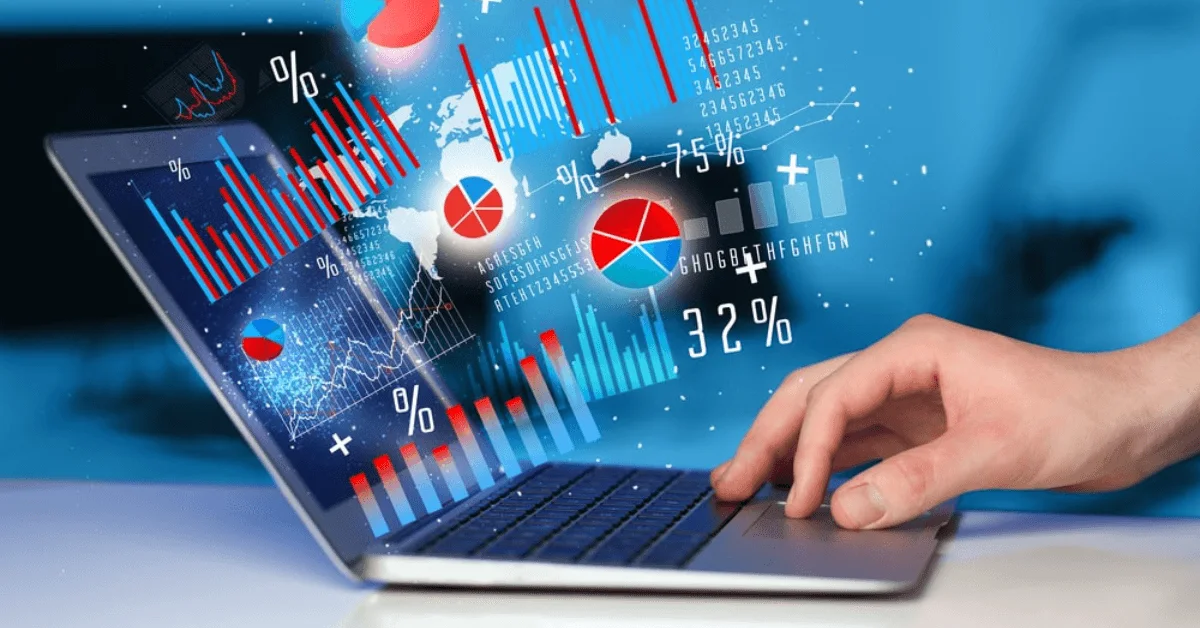In this digital age, the term “data” can often be much like a loaded question; many industries have an overabundance of raw data available but a distinct lack of understanding of how to deal with that data. The pharma and biotech industries are no exception.
Six Real-World Uses for Pharma IoT
The growing level of accessible, quality, real-world healthcare data is causing quite a stir throughout the pharmaceutical industry.
Recent findings1 indicate that applying specific data strategies to innovation optimization, improved efficiency of research and clinical trials, and transitioning doctors, insurers, and regulators to the rapidly shifting individualized, patient-centric approach to healthcare is consistently identified as a top priority among pharma leadership teams.

Pharma data collection and analytics are so essential to the future of pharma that nearly 40% 2of pharma professionals identified it as the most significant trend in the industry for the coming year.
Relevant data collection and uses3 identified by respondents include…
- Determining potential drug candidates.
- Monitoring of clinical trials.
- Analyzing trends in electronic health records.
- Improving tracking of patient statistics.
- Predicting healthcare outcomes.
- Designing treatment protocols.
Much like any other industry, there is an enormous amount of raw data available to pharma companies, but harvesting and harnessing that data can require a bit of work.
In order to remain competitive in the rapidly evolving field of pharma data, organizations must understand the following:
- Which data sources available are relevant to the pharma industry.
- The unique differences between these data sources.
- The importance of the information provided by these data sources.
- How to harness this information to benefit your company.

Primary vs. Secondary Data Sources
All data is not equal, which is especially true in the pharma industry. To simplify things, pharma data typically fall into one of two categories: primary or secondary data sources.
Primary Data Sources
A primary data source gathers information through direct interaction with the end-user and through purchased data. This type of information is obtained when…
- Physicians are attended by a sales rep.
- Prescription history.
- Patient participates in a clinical trial.
- The patient is involved in treatment where a medical claim is generated.
Primary source data is essential as it provides vital information gathered through study, trial, testimonial, or other forms of direct interaction between a patient or provider and a pharma product.
Secondary Data Sources
Secondary data sources gather information through market research and often use data gathered in databases and registries. Examples of pharma secondary data sources include…
- Various forms of social media.
- Websites
- Sunshine Act Database
- FDA database
Something to keep in mind is that secondary data source information is typically public information available for free and provides valuable information that can help you reduce costs, advance sales, and adjust the focus of your company.
Regardless of the source, both primary and secondary data provide timely, relevant, and important information essential for evaluating and identifying strategic opportunities in the overall global pharma market.
Explore More Relevant Articles on P360
- How to Streamline Your Clinical Trial Management with Cloud Technology
- The Emergence of Private Large Language Models in the Life Sciences Industry: Revolutionizing Generative AI
- Top Data Management Best Practices for Businesses
- Pharma Marketing Unveiled: Strategies for Success and Compliance in the Digital Age
- Powering Master Data Management Success with Data Analytics
Examples of Primary Data Sources In Pharma
1. Clinical Trials
Clinical trials are advanced research programs designed to test whether a new medication, treatment option, or medical device is as effective or more effective than current devices or treatments currently used or prescribed to patients.
Recent reports4 estimate the average cost associated with developing a new medication to be more than $2.5 billion, with nearly 60% of costs coming directly from the associated clinical trials.
These clinical trials are essential in providing detailed information about the safety and efficacy of pharma products, indicate who is able to use and benefit from the drug and highlights important side effects, interactions, and potential dangers associated with it.
Without the data provided through the clinical trial phase, the breakthroughs realized through new pharma developments have no value and their benefits will go unnoticed.

2. Patient Testimonials
It’s no secret that patients are the ultimate beneficiaries of the advances in medical science that help them overcome diseases and life-threatening challenges.
However, due to the nature of the pharma sales process, more often than not, pharma companies aren’t able to make a direct connection with the patient and rely heavily on the prescribers to educate the patients.
Over the last decade, companies have built great patient assistance programs and patient testimonials are increasingly important.
“There is no greater partner we can look for in healthcare than the patient,” says Cheryl Lubbert, President, and CEO, Health Perspectives Group. “By incorporating the patient’s voice early and often, we can expect better health literacy, better adherence, and better health outcomes.
In fact, patient testimonials are so effective, research conducted by Remedy Health demonstrated that…
9 out of 10 patients5 who have heard an inspirational story about another patient reported becoming more hopeful, which inspired them to take action.
This action includes trying a new treatment or medication, going to the doctor, exercising, or eating healthier.

3. Adverse Events
While adverse events are an uncommon occurrence, managing and tracking adverse events is a crucial data component for a pharma company to stay legally compliant with the FDA as well as to improve the conditions of future trials.
In this regard, the FDA has made guidance documentation6 very clear and readily available to help pharma companies ensure compliance.
4. Sales Operations and CRM Software
Strong, efficient data collection and analytics are an essential component to effectual sales operations for any pharma or biotech company.
This is often achieved through…
- Building strong customer relationships.
- Enhancing sales team performance.
- Monitoring the customer’s decision-making process.
- Efficiently monitoring and managing operational costs.
Sales operations and analytics software platforms within a pharma company analyze a large amount of data to develop a comprehensive promotion strategy and target universe.
Examples Of Secondary Data Sources
5. Social Media
Social media continues to transform the way the pharma and healthcare industries do business, especially in the evolving age of patient self-information.
Studies show7 that 80% of social media users are actively using the platform to search for health-related information. Also, over 90% of 18-24 year-olds report that they considered the health information provided on social media to be reliable.

Social media users also report sharing their first-hand experiences on a wide variety of health and medical topics over social media, including…
- Coping with chronic conditions.
- Treating acute illnesses.
- Choosing a healthcare provider.
In addition, an increasing number of social media users are looking to their doctors to actively share information about new drugs, benefits of new medications and treatments, and updates on specific illnesses.
60% of social media users8 report that they trust what doctors post on social media.
By engaging in social media about health-related topics, people are able to share their stories and experiences, as well as find treatment recommendations and options that have worked for others in similar medical circumstances. Social media provides a massive, active network for pharma data collection.
Companies are using these developing patient portals to glean information from end-users of pharma products and services.
Data gathered through social media channels can also help drive marketing campaigns by providing a rich well of potential marketing material such as patient testimonials and stories that when integrated into marketing materials are instantly relatable and give people the opportunity to make an emotional connection.
6. Sunshine Act Database
Each year, the Physician Payments Sunshine Act published data9 that discloses to the Centers for Medicare and Medicaid Services (CMS) payments made to teaching hospitals and physicians, as well as manufactures holding interests in those companies.

The Sunshine Act Database provides current data on over 28 million records related to nearly $17 billion in clinical trial-related payments to doctors, hospitals, and healthcare organizations.
Most of these payments are provided in the form of travel, research, gifts, meals, and speaking fees.
The database also details information pertaining to the ownership interests that physicians and their family members have to clinical trial organizations.
This data provides valuable information that has significant implications for the impacts of the efficiency of your organization.
A 2009 survey discovered 10that 84% of physicians interacted financially with drug, device, and medical supply manufacturers.
These relationships often resulted in swayed decision making that directly correlated with inflated healthcare costs.
Having access to the type of pharma data provided through the Sunshine Act Database is critical to understanding the value attached to drugs.
Especially in a time when…
One in four prescriptions11 drug users reports difficulty affording their medication costs.

Are You Ready To Access Actionable Pharma Data and Analytics For Superior Outcomes?
In the current era of open healthcare information, a wide variety of valuable pharma data is available and accessible to prescribers and patients alike.
Pharma organizations that demonstrate the ability to collect, analyze, and respond to relevant pharma data also demonstrate the ability to better meet the needs of their customers/patients, accelerate innovation, and increase revenue and overall value.
We at P360 provide powerful, streamlined access to the most relevant primary and secondary pharma data sources available including:
- Clinical Trials
- Patient Testimonials
- Adverse Events
- Sales Operations
- Social Media
- Sunshine Act Database
We proudly serve as a premium pharma data solutions provider, allowing you to focus on your resources and efforts on implementing this knowledge, adapting to customer needs, and achieving better results and increased earnings for your business.
If you have any questions or comments, please feel free to post them below in the comment section!
Want to learn how our advanced pharma analytics and data management platform can provide you with the information you need to enhance your company’s performance? Request a free platform demo today below!
References
2: https://hitinfrastructure.com/news/big-data-analytics-to-have-major-impact-on-pharma-next-year
3: https://hitinfrastructure.com/news/big-data-analytics-to-have-major-impact-on-pharma-next-year
4: https://www.scientificamerican.com/article/cost-to-develop-new-pharmaceutical-drug-now-exceeds-2-5b/
5: https://www.pharmavoice.com/article/2017-3-patient-stories/
7: https://www.appliedclinicaltrialsonline.com/view/how-social-media-transforming-pharma-and-healthcare
8: https://www.appliedclinicaltrialsonline.com/view/how-social-media-transforming-pharma-and-healthcare
9: https://www.cms.gov/OpenPayments
10:https://jamanetwork.com/journals/jamainternalmedicine/fullarticle/226207



